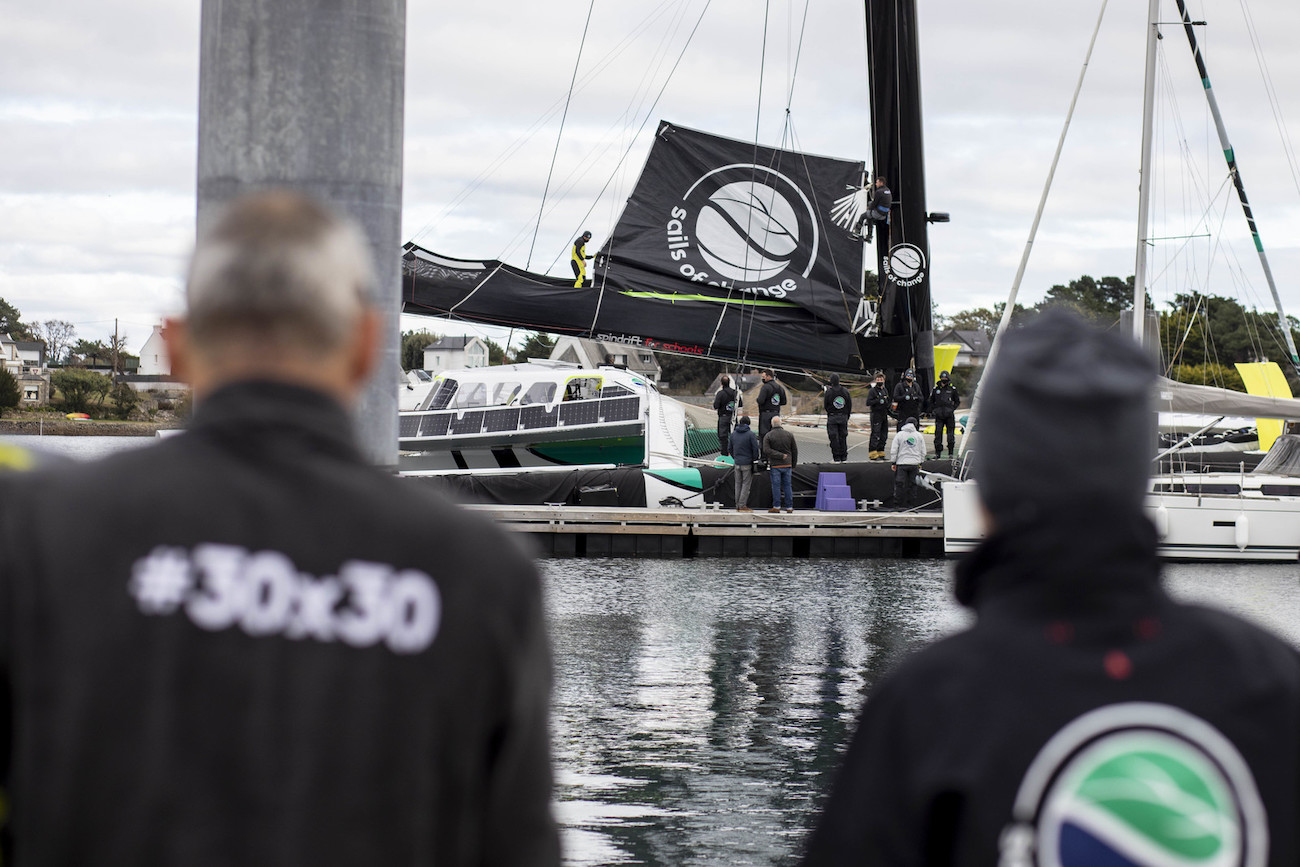


The maxi-trimaran Sails of Change will set sail early afternoon this Tuesday (at around 13:00 UTC) from her port of registry of La Trinité-sur-Mer, Brittany, and head straight for the Jules Verne Trophy start line. Dona Bertarelli, Yann Guichard and their crew have decided to set a direct course for a point offshore of Le Créac’h lighthouse (island of Ushant) to hook onto a front set to sweep across Brittany over the coming days.
After several weeks’ wait, the maxi-trimaran Sails of Change should theoretically set sail tonight offshore of Le Créac’h lighthouse (island of Ushant) in a bid to improve on the round the world record under sail. This Jules Verne Trophy, held by Francis Joyon and his team since 2017 (40 days 23 hours and 30 minutes), is particularly difficult to beat as the Cape of Good Hope must be reached within a minimum of around a dozen days.

A favourable configuration
However, in addition to the Azores High being located in a favourable position to target the equator in around five days (the WSSRC record is still held by Spindrift 2 in a time of 4 days 20 hours 07 minutes), it is essential that the situation also permits a very direct trajectory towards the tip of South Africa in the southern hemisphere. Indeed, once the line separating the two hemispheres is crossed, a low pressure system needs to form offshore of Brazil with a SE’ly trajectory to push back the Saint Helena High towards the island of the same name.
By hooking onto the back of this disturbed system, Sails of Change would then be in a position to drop down at a very quick average speed of 30 knots towards the Roaring Forties, whilst avoiding the drifting ice which, having come loose from the Antarctic ice field, can come up as far as Gough Island or even towards the Kerguelen archipelago.
After a lengthy analysis of the weather situation offshore of the Breton headland, Yann Guichard, skipper of Sails of Change, Benjamin Schwartz, on-board navigator, and Jean-Yves Bernot, onshore router, have finally agreed to dock out of La Trinité at 13:00 UTC today. The maxi-trimaran should take around ten hours or so to position itself on the start line of the Jules Verne Trophy. In line with the tide (High Water at Ushant at 12:35, coefficient 60) and above all the arrival of an active front on Tuesday evening, the attempt should kick-off between midnight and 05:00 UTC. Indeed, on the back of the heavy rain expected, a powerful NW’ly wind is forecast which would carry them down towards the Cape Verde archipelago in a little over three days…
Over a direct theoretical course of 21,600 miles, the Jules Verne Trophy is one of the toughest records to improve on. Throughout the crossing, in addition to the sporting challenge, the crew will be eager to champion the ‘30×30’ campaign, which is a global call to action from scientists which aims to protect at least 30% of the ocean and the earth by 2030.
Notifications